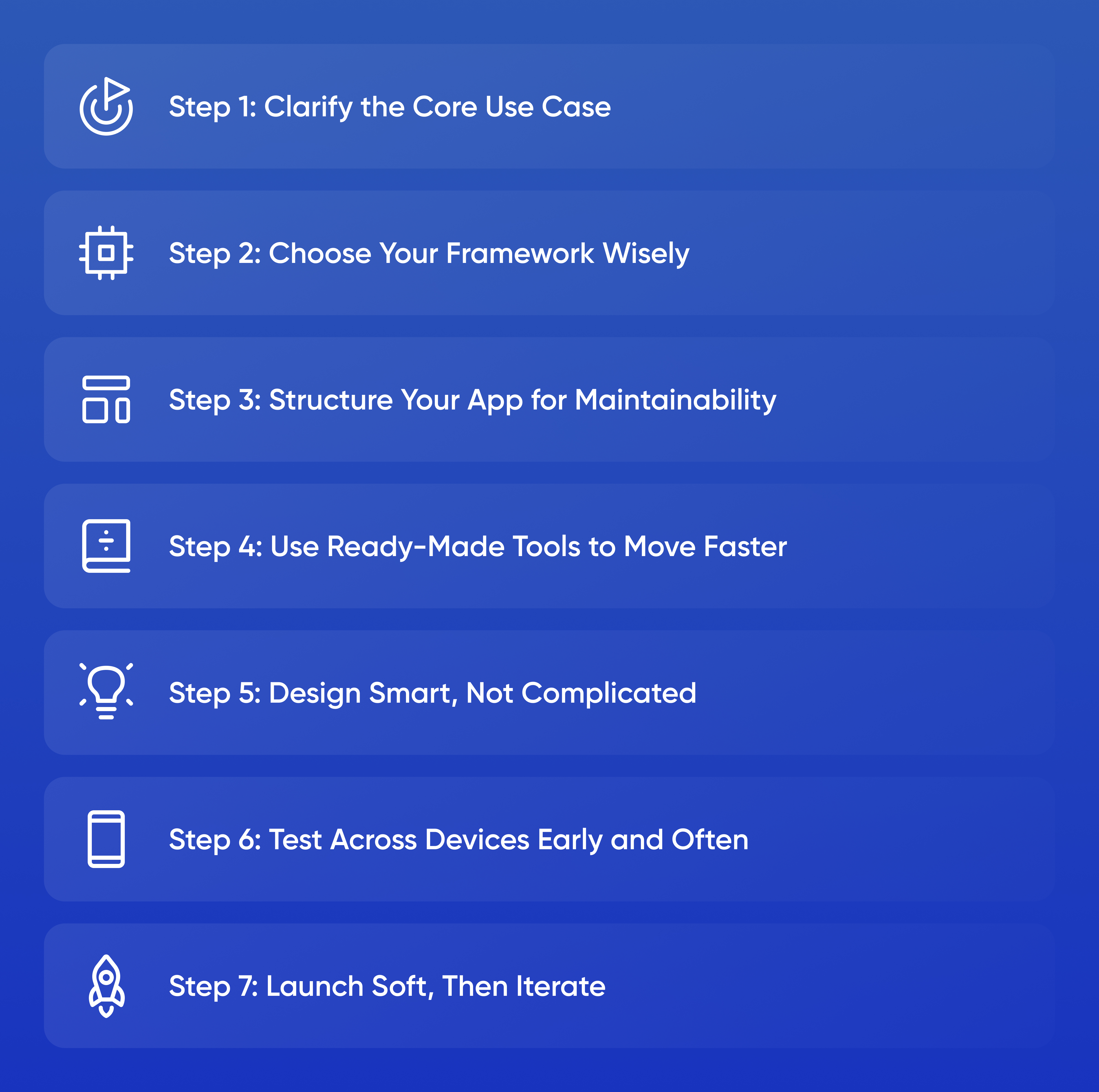For any early-stage founder, mobile is no longer optional. Users expect intuitive, polished apps available on both iOS and Android — and they expect them yesterday. But launching two separate codebases on a startup budget? That’s a trap.
Cross-platform development isn’t just a cost-saving measure anymore. In 2025, it’s the smartest, fastest way to get your product into the hands of real users — and iterate quickly based on feedback. The key is knowing how to approach it with the right tools, structure, and mindset.
At Movadex, we’ve built dozens of cross-platform apps for startups across industries — from SaaS to marketplaces, edtech to consumer fintech. This is our field-tested guide to doing it right.

Why Cross-Platform Is the Default for Startups
Launching on iOS and Android used to require two teams, two codebases, and twice the budget. Now? You can build once, deploy twice, and focus your resources on growing your user base — not duplicating effort.
Modern frameworks like Flutter and React Native deliver near-native performance, delightful UX, and stable builds across platforms. Paired with smart backend services like Firebase or Supabase, you can get to market faster, cheaper, and with fewer headaches.
And for startups, speed to market isn’t a luxury. It’s survival.
Step 1: Clarify the Core Use Case
Don’t start with features. Start with value.
Ask yourself: what’s the one thing your app should help users accomplish on day one? That’s your core use case — and everything else should revolve around making that experience seamless.
Your cross-platform strategy should prioritize delivering that value on both platforms with the least amount of friction. If your MVP requires onboarding, user input, and data visualization — focus on those flows.
Keep your scope tight. The goal is to validate, not impress.
Step 2: Choose Your Framework Wisely
Flutter
Backed by Google, Flutter uses Dart and is known for expressive, customizable UI. It’s especially good for design-heavy apps and fast iteration.
Pros:
-
Consistent UI across devices
-
Strong performance
-
Great for custom animations
React Native
Built by Meta, React Native lets you use JavaScript and share logic with your web app (if applicable). Ideal if your team is already working in React.
Pros:
-
Easy to find dev talent
-
Large ecosystem
-
Strong community support
Both are battle-tested. Your choice should come down to your team’s expertise and product requirements.
Step 3: Structure Your App for Maintainability
Even if you’re just shipping an MVP, structure matters. The more modular your architecture, the easier it is to grow, debug, and onboard new developers later.
Tips:
-
Separate UI from logic
-
Use clean folder structures (components, screens, services)
-
Implement basic state management early (like Provider, Riverpod, Redux, or Context API)
-
Set up environment variables for dev/staging/prod
Use a starter template if needed, but avoid bloated boilerplate that adds complexity without value.
Step 4: Use Ready-Made Tools to Move Faster
Cross-platform development shines when paired with the right tools. Here’s a stack that works well for most early-stage startups:
-
Authentication: Firebase Auth, Supabase Auth
-
Database: Firestore, Supabase Postgres
-
UI Components: Flutter’s Material/Cupertino widgets, React Native Paper
-
Forms & Validation: react-hook-form, Formz
-
Navigation: react-navigation or Flutter’s Navigator 2.0
Don’t reinvent what’s been solved. Focus your energy on your unique value.
Step 5: Design Smart, Not Complicated
Cross-platform doesn’t mean “one-size-fits-all.” While your design can be consistent, you still need to account for platform conventions.
Keep in mind:
-
Android and iOS have different back gestures, tab placements, and modal behaviors
-
Users expect platform-specific icons and animations
Create a unified brand aesthetic but allow your app to feel native on each platform. Your users will notice — and appreciate — the polish.
Step 6: Test Across Devices Early and Often
Nothing kills early momentum like app crashes or UX issues on one platform. Cross-platform doesn’t mean identical performance.
Use tools like:
-
Expo Go or Flutter DevTools for fast testing
-
BrowserStack or Firebase Test Lab for automated device testing
-
Manual testing on both iOS and Android simulators and real devices
Build in error logging (e.g., Sentry) and crash analytics so you can catch issues before your users do.
Step 7: Launch Soft, Then Iterate
Don’t obsess over perfection. Focus on getting feedback.
Start with a closed beta on TestFlight and Google Play’s internal track. Onboard 20–30 users, observe their behavior, gather feedback, and prioritize usability over features.
Track:
-
Activation rate (do users complete onboarding?)
-
Core task success (do they achieve the primary value?)
-
Drop-off points (where do they get stuck or leave?)
Based on this, your roadmap writes itself.
Final Thought: Build Once, Learn Fast, Grow Everywhere
Cross-platform mobile development doesn’t just save time. It aligns your entire product strategy around speed, learning, and iteration.
As a startup, your goal isn’t to build the most advanced app on day one. It’s to build something people want — and get it into their hands quickly enough to adapt.
At Movadex, we help early-stage founders launch smart, scalable mobile apps with cross-platform speed and startup-grade resilience. Whether you’re building a tool, a marketplace, or a movement — we’ll help you ship it, refine it, and grow it — all from a single codebase.




